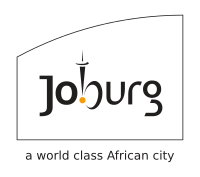Heritage Buildings
| Things to do |
|---|
|
Andrew Mlangeni
By 1962 Andrew Moketi Moeti Mlangeni was one of the first six members of Umkhonto We Sizwe to be trained in Communist China. A keen golfer he had now to concentrate on Politics. In 1964 he was arrested and sentenced to life imprisonment in the Rivonia Treason Trial and incarcerated in the cell next to Nelson Mandela on Robben Island. He returned with a degree and post graduate qualification in Political Science – to this home that he had occupied since 1954 with his wife June and their children. In 2015 the backroom boy became head of the ANC’s Integrity and Ethics Committee, an accolade he richly deserved.
|
|
Arts on Main
This building began in 1911 as a bonded liquor warehouse for William McBain. Later the front offices were used by the construction company of D.F. Corlett, master-builder and Mayor of Johannesburg from 1931-'32. Arts on Main was redeveloped by Propertuity in 2009 as a pioneering arts centre, combining five consolidated warehouses, and designed by Architects Daffonchio and Associates. It was from here that Maboneng spread.
|
|
Bantu Men's Social Centre
Opened in 1924 to provide recreational facilities for young men, the BMSC became a great centre of cultural activity, frequented by intellectuals, artists, writers and emerging political leaders. Sporting events were held there, plays and concerts, and the annual Eisteddfod, which became a national event. In 1944, the Youth League of the African National Congress was founded here, which went on to transform the politics of the parent organisation.
|
|
Baptist Church of Troyeville
On this site, in 1897, the Baptist Church of Troyeville was founded in a small wood and iron building known as "The Tin Tabernacle." The present church building was begun in 1909, designed by the architect Alan Monsbourgh using good materials and excellent craftsmanship. The joinery is outstanding. The spire, by MacDonald Sinclair, was erected in 1911 and is topped by an interesting combination of a cross and a Star of David. This plaque was erected to mark the church's 120th anniversary in 2017, at which time the church continued as an active congregation, reaching out into the surrounding community.
|
|
Office of Bantu World
This site housed the offices and printing press of Bantu World – the first national publication aimed solely at a black readership, which became the forerunner of Drum Magazine and The Sowetan. Starting in the 1940s, key names in black journalism and literature were involved here, including Selope Tehma, T.D. Mweli Skota, B.W. Vilakazi, S.E. Krune Mqhayi, A.C. Jordan, Peter Abrahams, Henry Nxumalo, Ernest Cole and Aggrey Klaaste.
|
|
Orlando East Public Library
The first purpose-built public library in Soweto, the Orlando East Public opened in 1950. Built by trainees of the Orlando Vocational Training Centre, it was bigger than the existing public library branches in Johannesburg. At the time, this was probably the most significant public library for Africans in the country. The library received a special gift in 1963, with the donation of the private book collection of Dr. A.B. Xuma, a former ANC President. The facility was upgraded and extended in 2000, and remains the oldest active library in Soweto.
|
|
Orlando Stadium
This was the site of the first stadium in Soweto, officially opened in 1959. For almost 50 years this was a famous home of soccer, associated with a host of sporting greats, and a venue for other sports, entertainment and political events. In June 1976, this was the planned destination of protesting students, but police prevented marchers from reaching the stadium. The original Orlando Stadium was demolished in 2006, to be replaced by a modern new facility.
https://www.stadiummanagement.co.za/stadiums/orlando/ |
|
Outeniqua Parktown (The Shrines)
The house was designed by EC Choinier in 1904 for Ohlsson's Breweries. The first occupant was Robert Kantor, their manager, who had been extensively involved in provisioning the Imperial Military Railways during the war. Thirsty soldiers gave a major impetus to local breweries including Ohlsson's which bought Thoma Breweries in Braamfontein in 1902 and by 1906 had built a much bigger plant, LION Breweries
|
|
Oxford Road Trig Beacon
This strikingly beautiful beacon replaces an 1850s stone cairn farm beacon and incorporates the 1928 round drum of the trig beacon, common throughout South Africa. The centre island of Oxford Road originated from a water divide chosen for a farm boundary, which also served as a fire break and horse and wagon track; later this line defined the roadway and the Gautrain tunnel.
|
|
Pallinghurst West Cliff
The original house was based on a design done by Herbert Baker in 1903 for Raymond William Schumacher (Ffennel), but was only built some years later. Schumacher was a Captain in the Rand Rifles, the corps raised in 1900 to guard the gold mines from attack by the Boers. During the war the British erected a blockhouse on this property overlooking what was then Old Pretoria Road. The historic building and land were donated to the Hope School by Schumacher.
|
|
Phefeni Junior Secondary School
In May 1976 learners at Phefeni Junior began boycotting classes in protest at the imposition of Afrikaans as a medium of instruction. Protests spread to Belle Primary, Thulasiswe Higher Primary, Emthonjeni and Khulangolwazi Higher Primary School. On June 16 all schools were to pass via Phefeni Junior en route to the destination of the march. It was near Phefeni Junior that police began shooting and using teargas against students.
|
|
Pilrig Coach House Parktown
Situated on the South boundary of the property the Coach House was designed in 1903 by architects Baker, Masey & Sloper for Archibald Balfour. Apart from stabling horses, it housed the fodder and carriages to service the property. To the north was a tennis court and gardens which extended up the hill to the main house which is still standing. The Coach House was converted for office use in 1981/2
|
|
Prospect Terrace Parktown
Frank Emley designed this home in 1913 for Henry Melville Taberer, a keen cricketer who headed the Native Labour Board. The house in the Arts and Crafts Idiom, expressing the philosophy of William Morris and repeating elements from his Red House. In 1937 Dr Bernard Friedman M.P. bought it. He was an ear, nose and throat surgeon and a founder of the Progressive Party. In 1986 it became the home of Dr Johan van der Wat and family. Like his father, he became a prominent gynaecologist. He was a member of the team that, in 1986, pioneered the world's first mother/daughter surrogate triplet pregnancy.
|
|
Radium Beer Hall
Opened as a tearoom by the Khalil [Kalil] family in 1929, the Radium pursued a double life as a shebeen illegally selling liquor to black customers. The bar counter was rescued from the demolished Ferreirastown Hotel, and it is believed that during the 1913 strike trade unionist Mary Fitzgerald delivered her speech to striking miners standing on its scarred surface. (Blue plaque inscription) Typical 1930 single storey row of shops with columns supported veranda along the shopfronts and main entrance to beer hall on the corner of Ninth Street and Louis Botha Avenue. The Radium Beer Hall forms part of a historical cluster in the area and needs to be preserved as an important social site of Orange Grove.
|
|
Rahima Moosa House
Womens' leader Rahima Moosa shared this home with her husband and fellow-activist Dr "Ike" H.M. Moosa. The couple played a significant role in organising the 1955 Congress of the People, and in collecting signatures for the Freedom Charter. Together with Lillian Ngoyi, Helen Joseph and Sophia Williams, Rahima Moosa led the epic March of 20 000 women to the Union Buildings in 1956, to protest against the extension of apartheid pass laws. At one point the site had Provisional Protection.
|
|
Rand Club Marshalls Town
The first Rand Club was built with shares of £10 purchased by each candidate wishing to become a member, and thus the money required for building the clubhouse was raised quickly. The first clubhouse was a modest brick and thatch pavilion consisting of a single floor. The second clubhouse was built on the same site as the first, but had grown to be an elaborate two-storey structure. Its soaring turret was one of the tallest structures in Johannesburg at the time.
The Third clubhouse as it stands today was first occupied in December 1904. Its metallic base structure was fabricated in the United Kingdom before being shipped to South Africa where it was erected and clad in brick and concrete.
|
|
Randjeslaagte Beacon Parktown
When Johannesburg was proclaimed in 1886 on the triangular site Randjeslaagte the area of the town was nine square km. Randjeslaagte was a piece of ‘uitvalgrond’ – land left over from the farms surveyed around it, which was not considered suitable for farming. The beacon marks the apex of the triangle with its base running along Commissioner Street, from End Street in the East to Ntembi Pilisio Street in the West. This nine square km. remained the municipal area of Johannesburg until 1901. The original surveyor’s beacon was a white pole fixed in a cairn of rock and concrete. It was declared a national monument in 1965 and the cairn smoothed with cement.
|
|
Savernake Parktown (Holcombe)
Built in 1904 and designed by Leck and Emley. Savernake or Holcombe as it was originally known was built for Surgeon Major W.T.F. Davies. In 1916 it was purchased by Dr Bernard Price and was associated with the University of the Witwatersrand. The house is now owned by the University of the Witwatersrand and is home to the Vice-Chancellor.
|
|
Ridgeholm Parktown
This house was designed in 1902 by architects Leck and Emley for Richard Baumann, an attorney who served on Milner's Permits Committee. This committee controlled the return of so-called Uitlanders - British subjects who had been forced to leave Johannesburg when war between Britain and the ZAR broke out. Ridgeholm marks the first use in Johannesburg of Cape Dutch gables as a clearly South African element. Since 1993, it has been used as a theatrical venue for children. (Blue plaque inscription) The original plaque was damaged in early 2014. It was replaced by the City of Johannesburg on 4 August 2014. The original inscription is below read as follows: "This house was designed in 1902 by architects, Leck and Emley, for Richard Baumann, an attorney who served on Milner's permit committee which controlled the return of Uitlanders to their homes on the Rand. Milner wanted to speed up their return from the wretchedness of the refugee camps, but the military authorities were reluctant to allow this, being more concerned about security and food shortages."
|
|
Satyagraha House Orchards (The Kraal)
Originally known as the The Kraal, this home was built by the architect Herman Kallenbach. From 1908-1909, Kallenbach lived here with his friend, Mohandas Gandhi. During these years Gandhi deepened his philosophy of non-violent struggle, called Satyagraha. Turning away from a life of wealth and comfort, both men embraced ideals of simple living, self discipline and manual labour. (Blue plaque) The Kraal which was designed and built by Hermann Kallenbach in 1907 is located in close proximity to Louis Botha Avenue in Orchards. It is a single storey residence which consists of two rondavel buildings with thatched roofing and is connected with a communal rectangular shaped dining room. Now used as a museum and guest house it was originally intended to be the home for Kallenbach and his close friend Mohandas Gandhi who lived here from 1908 to 1909.
https://www.satyagrahahouse.com/ |
|
Seth Mazibuko House Orlando East
This site has been a base for planning different struggles against apartheid. It remained under surveillance by the Security Branch during and after June 1976. It was here that Seth Mazibuko, the youngest member of the Student Action Committee, was arrested in July 1976, aged just sixteen. He was held in solitary confinement for 11 months in Number Four at The Fort Prison, in Braamfontein. Seth was then charged, tried and sent to Robben Island for seven years where he completed his matric in English and obtained his B. Ed. degree.
|
|
St Alban's Mission Church
Founded in 1898 to serve the local Coloured Anglican Community, a magnificent church designed by F.L.H. Flemming replaced the old wood and iron building in 1928. The forced removal of the congregation in the 1960s threatened the survival of the Church. But in 1960 the offices of the diocese were located here under Bishop Leslie Stradling, who was then followed by Bishops Timothy Bavin, Desmond Tutu and Duncan Buchanan. St. Albans served as the Diocesan offices until 1987. It remains a potent reminder of the forced removal of the Coloured people from Ferreirasdorp and Marshalltown.
|
|
St Aubyns West Cliff (Missak Museum)
A highly visible landmark on the peak of this ridge, notable features are the house, terraced gardens and extensive view. Plans were drawn by a Scottish architect, Alexander Forest from 1928 and the house was built by J.M. Fernandez, who recruited mineworkers from Mozambique - they were probably used in the construction of the terraces in the gardens. In 1950 Julius Missak bought it and over twenty years accumulated a collection of ceramics and library of French Classics which he bequethed to the Rand Afrikaans University on his death in 1980 on condition that they established a centre for Armenian and Flemish culture. It is distinctive for its fine garden setting, clearly Madeiran in tradition, and is of a typical Portugese design. In 2005 it was sold and the house, gardens and outbuildings were completely restored.
|
|
St George's Church Parktown
Situated in the suburb of Parktown, Johannesburg, St George’s was designed by Sir Herbert Baker and the original structure was erected in 1904 as a church hall. The plan was to build a church later but, in 1910, the hall was modified to repurpose it as a church. These modifications included included the bell tower and vestry with final alterations to the structure completed in the nineteen sixties.
|
|
Stone Lodge West Cliff
The original house was designed by Frank L.H. Fleming of Baker and Fleming in 1918 for Leopold Greenberg in the Arts and Crafts style, which favoured the use of traditional English vernacular forms, local materials and fine craftsmanship. Greenberg started his legal practice in Johannesburg in 1909, was appointed judge at age 1939 and Judge-President of the Transvaal Provincial Division in 1938 (when he moved to Pretoria), eventually becoming a Judge at the Appeal Court. One of his famous judgements was in the Daisy de Melker trial.
|
|
Sunnyside Park Hotel Parktown (Sunnyside)
The house was built in 1895 for Hennen Jennings, a mining engineer. In March 1901 it became the official residence of Sir Alfred (later Lord) Milner, British High Commissioner, and the man generally blamed for the outbreak of the war. As Governor of the Transvaal and Orange River Colonies, Milner introduced civil administration more than a year before the war ended and was responsible for the post-war reconstruction. He left South Africa in 1905. The facade is a Provincial Heritage Site.
|
|
The Angles Parktown
In 1912 Israel Hayman commissioned Baker and Fleming to design the house as a gift to his bride. Hayman, an attorney, served with Marshall's Horse in Natal and was wounded at Acton Holmes near Spionkop. He returned to his unit and fought throughout the war, retiring with the rank of lieutenant. He received both Queen's and King's Medals with seven bars.
|
|
The Bell House Parktown
This large double storey symmetrical home was designed in 1919 by J.M. Solomon and A.J. Marshall for W.H. Haig. The house is named for the ship's bell in the koppie stone archway to the entrance porch. Laterowners were African Explosives (1928) and Dr. Francis (Pinky) Hill 1951, mining engineer and scientific researcher particularly into ventilation and dust control on the mines.
|
|
The Capers West Cliff
Designed in 1918 for Mr and Mrs. T.J. Welch by Cook and Ralston, architects of the original Pretoria Town Hall, this gracious home was acquired in 1924 by Bridget and Edwin Orlando Leake. A staunch Wesleyan and a Rand pioneer Mr Leake served as a councillor on the Johannesburg Council for twenty-seven years without remuneration, and as mayor from 1925-1926. Orlando Township in Soweto was named after him in recognition of his concern for disadvantaged communities.
|
|
The Ridge School West Cliff (The Woolsack)
The original house was designed in 1902 by architects , Aburrow & Treeby, for Lieutenant-Colonel Sir Aubrey Woolls-Sampson, co-founder of the Imperial Light Horse Regiment. Severely wounded at Elandslaagte, he remained with the regiment until the surrender of Pretoria. Thereafter he became an outstanding field-intelligence officer, ably assisted by African scouts. He was Knighted for his service during the war.
|
|
Transvaal Chinese United Club Mansions Ferreiras Dorp
Founded in 1909 by the small pioneering Chinese community, the club offered rooms for newcomers as well as attractive social amenities. Funds were raised to uplift the local community. The Club remained financially successful, building a block of flats on the adjoining stand in 1940 which is one of the city's architectural gems.
|
|
Trevadlock Parktown (Hurstcliffe)
This house was designed by H. Baker and Masey in 1903 for Richard Alan Barry and his wife, Gladys (van Der Byl). Barry was born in Kimberley in 1874, educated mainly in England before arriving in Johannesburg in 1893, working initially at Robinson Mine and later at West Rand Mines, becoming Chief Surveyor.He served with Marshall’s Horse during the Anglo-Boer War, ending as a Lieutenant. He received the Queen’s Medal with five clasps. He then continued in Johannesburg as a mining engineer.
|
|
Tuli House Noordgesig
Jake Tuli (born Jacob Ntuli, 1929 - 1998) was a South African professional fly, bantam and featherweight boxer. He was a British Empire flyweight titleholder making him the first black South African to hold an Empire championship title. He also held the Transvaal (non-white) flyweight title, South African (non-white) bantamweight title, and South African (non-white) flyweight title. For Nelson Mandela, Tuli was simply "our greatest hero". Tuli was posthumously awarded the Order of Ikhamanga in Silver.
|
|
Union Castle Building Johannesburg
This building was designed in 1938 by J.A. Moffatt & T.N. Duncan as the Johannesburg office of the Union Castle Mail Steamship Company Limited, founded in 1853 by Donald Currie whose name is associated with competitions in cricket and rugby. Until 1977 the Union Castle line had regular passenger and freight services between South Africa and England which also carried the mail.
|
|
Villa Arcadia Parktown (Arcadia Jewish Orphanage)
In 1898 a Swiss Chalet was built here for merchant Carl Rolfes. In 1906 it was bought by Randlord and MP Sir Lionel Philips, chairman of Rand Mines. His influential wife Florence founder of the Johannesburg Art Gallery and described as 'No Ordinary Women', masterminded the creation of the present Villa Arcadia with Architect Sir Herbert Baker. Certain design features are mirrored in Pretoria's Union Buildings, designed by baker the following year. In 1923, under the S.A. Jewish Orphanage, it became 'The Arc', serving children for the next 78 years. Bought by HOLLARD in 2003, the Villa's original elegance and historic craftsmanship have been restored and are complemented by a modern art collection.
|
|
Wanooka Parktown (Arnot)
This house was built in 1902 for Captain Henry Smith Greenwood of the Royal Canadian Dragoons, who took Part In Lord Roberts' grand offensive from De Aar Junction to Pretoria. Thereafter Greenwood commanded the Royal Engineers with the Imperial Military Railways in Johannesburg. His Wife, Matilda Florence died in July 1903, but he remained here with his two sons until returning to Canada in 1908.
|
|
Weber House Parkview
Built in 1934, designed by J.D. McCullum, this house was bought before completion by Abel Hossy, a mining engineer and his wife, Rosie. It was home to them and their three children and later, their daughter Frances and her husband Norbert lived there until 2011. Apart from the alterations to the original porch and verandah in 1970, the house has remained unaltered. It was the only residential site in the block this side of Tyrone Avenue when it was rezoned as commercial. In 2011 it was sold to Helen Bramwell and renamed Weber House in memory of Gerald T. Weber (Blue plaque inscription) Blue plaque correction: Name should be Gerhard T. Weber.
|
|
Windybrow |
|
Wynnstay Parktown
A landmark building, Wynnstay was designed in 1913 by Percival Hill Mitchelson for Mr Gregory, the Messenger of the Court who lived here with his wife until 1931. This attractive and deceptively asymmetrical house has large bay windows and a broad veranda flowing into the garden. It was bought by the Municipality in 1970 to be demolished for the M6 motorway, but was later leased to the Children's Theatre instead
|
|
Westcliff West Cliff
The original buildings and stables, designed by architect Harvey Clayton in 1903, were built for William Lincoln Honnold, an American mining engineer and his wife, Caroline. They arrived in the Transvaal in 1902. Alterations by Herbert Baker in 1909 changed and enlarged the north facade and added the west wing. Further alterations were done in 1917 by Pearse and Ellis. Honnold was with Consolidated Mines Selection Co. Through his American contacts he helped facilitate part of the establishment of Anglo American Corporation of South Africa, becoming one of its permanent directors. The house was later occupied by Harold Thomson Dickinson, manager of De Beers mine. He was involved in manufacturing munitions during World War I and, in 1936, became a director in the Anglo American Group.
|
|
Ye Rokkes West Cliff (High Eighton)
This home was designed in eclectic style in 1902 by Aburrow and Treeby for John Jolly, a merchant and founding director of Premier Diamond Mine. Later notable occupants include F Glenton, tea importer, AA von Maltitz, mining engineer and director of Anglovaal companies, his wife Gerda von Maltitz, painter, and their daughters Amalie von Maltitz, sculptor, in Stalhuis, the converted stables, and Alida van Deventer, artist and marionette master. Alida used the billiard room as a small theatre, performing there for over five decades.
|
|
Qoboza/Klaaste Building Perskor Building
The blue plaque on this site does not commemorate the actual building but rather the demolished buildings of St Augustines High School for Boys. The first buildings on this site were SAINT AUGUSTINE' S HIGH SCHOOL FOR BOYS 1892-1899 Headmaster; Rev. O. Baumgarten, M.A. Oxon SAINT AUGUSTINE'S CHAPEL 1894 - 1906 Vicar: Rev. Harrison Thompson M.A. Cantab.
|

















